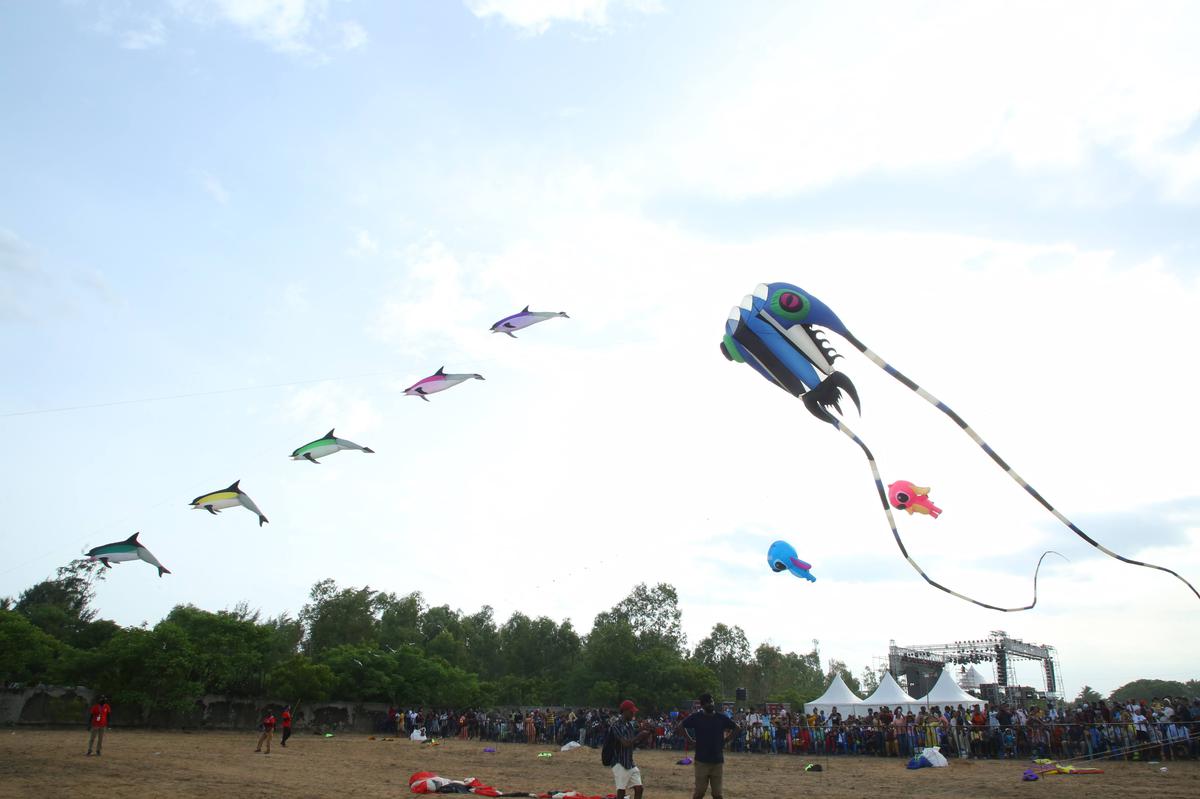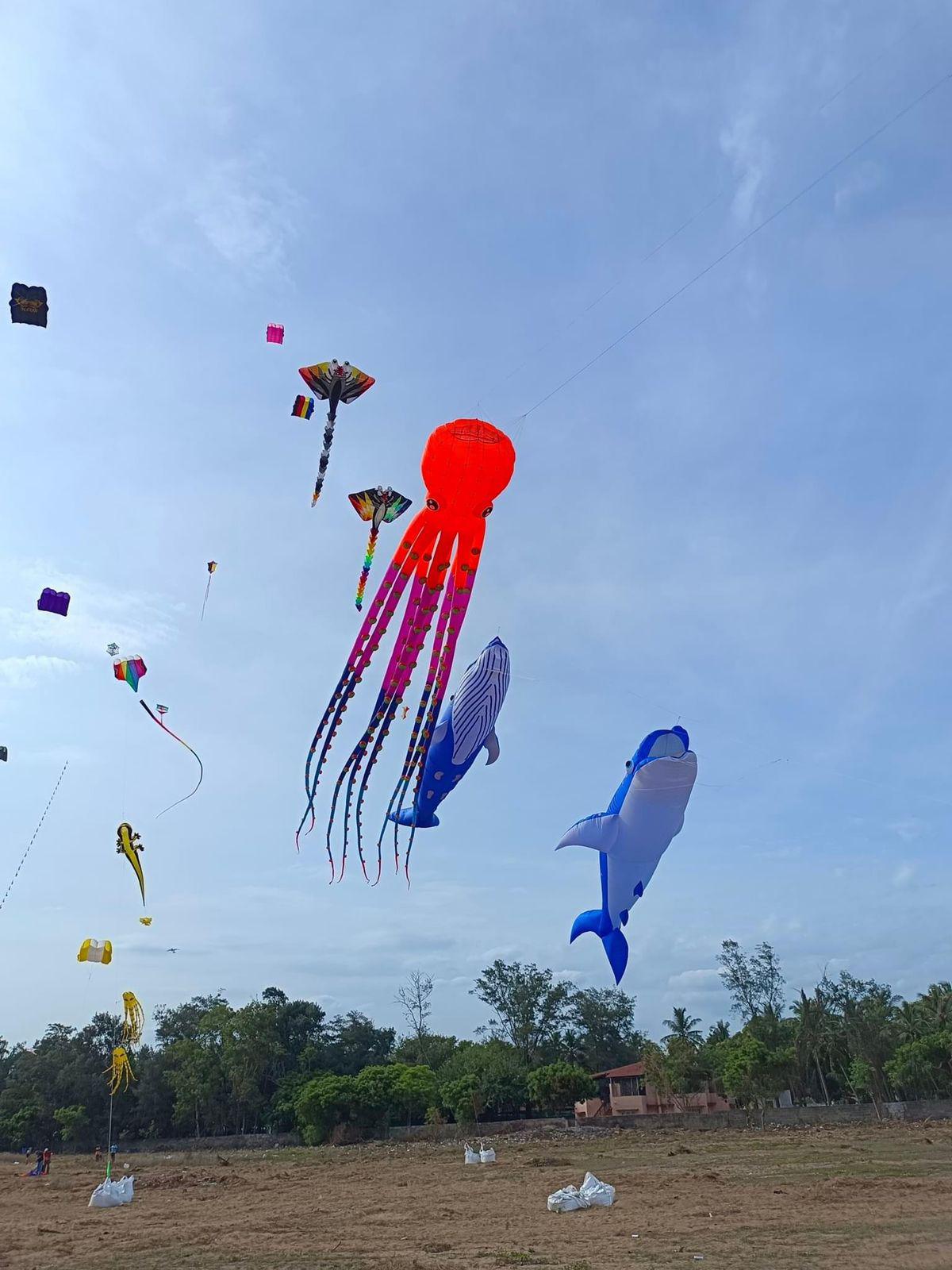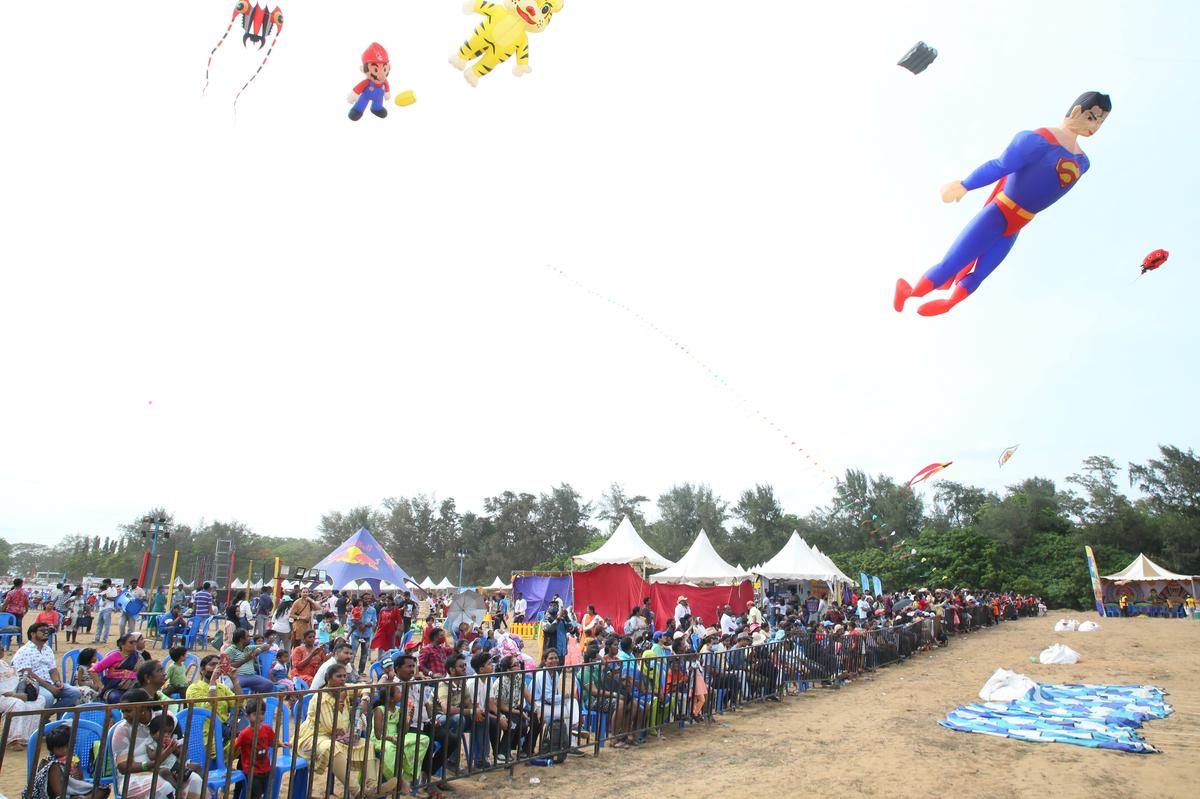Whales, pigs and an LED-lit UFO took to the skies recently, as kite fliers from across India and beyond descended at the maiden Over 124 kites were showcased at Tamil Nadu International Kite Festival. Some even weighed over 16 kilograms and cost around a lakh
Over 124 kites were showcased at Tamil Nadu International Kite Festival. Some even weighed over 16 kilograms and cost around a lakh
A flying squad had taken over the beaches of Mamallapuram. The members came armed with large kites and long lines. As they released their dramatically shaped kites into the air, turning the sky into a colourful mosaic, the crowds clapped and hooted in delight.
At the recently concluded Tamil Nadu International Kite Festival, Ashok Shah turned out to be quite the superstar. The 60-year-old from Dahanu Road, near Mumbai, unveiled a selection of 30 kites, including one with LED lights. They were all hits, especially the one shaped like Superman, and a set of 100 kites (strung together by a single string and flown as one long unit). “I kept flying those for more than two hours. The audience just wouldn’t let me leave,” he laughs, as few others requested him to wait while they clicked a flurry of photographs. He wanted to bring more, but “domestic flights allow only 15 kilograms per head and some of my kites weigh around 16 kilograms. I came with my wife and two helpers, so we managed 60 kilograms amongst us,” he adds.
Given the weight of the kites, many of the participants tied their strings to sand bags, to avoid battling the strong tugs of these kites. Ashok attached the strings of his kite to a belt around his body, so his arms could rest during the long hours of showmanship.
The three-day festival showcased over 124 kites from participants across India, Thailand and the US. “Thirty-one thousand people visited the event,” says Benedict Savio who co-organised the event with Tamil Nadu Tourism. It was a challenging feat to put together, he adds. Considering it was the first edition, there were some hiccups including a cancelled workshop. Anupama Joseph, who took her child and three friends for the event, says that while the kites were beautiful, the event could have done with more covered areas. “At night there were a few music performances but during the day there was not much other than just looking at the kites and food stalls,” says Anupama, who stayed for an hour. “I was hoping there would be something interactive for kids,” she adds.

Meanwhile, the photograph-hungry crowd was torn between the masterpieces in the air, one moment training their phone cameras at a flying pig, the next second focussing on an octopus. Then, a 16-metre long whale gently drifted past. Gold fish and sword fish followed in quick succession.
These were kites by Thaitan, a collaboration of eight kite flyers from Thailand. Over the three days of the festival, this team displayed 40 different kites, some made by them especially for Chennai and a few bought from earlier expeditions to other countries. “We bought the whale from New Zealand. While Simba from France cost us around 700 Euros,” says Peckie, who is part of the Thai team.

Yes, designer kites can cost quite a bit. Ashok says some of his are worth a lakh. There is a lot of effort that goes into making them, some taking up months of work. “When I started designing kites in 1993, I used to make flat kites. At an event in Ahmedabad, I saw a flyer from the US folding his kite which had an elaborate design. Back then we didn’t get ripstop (a fabric with which these kites are made) in India. So I started using umbrella material which does not let water and wind pass through,” he says. In the quest for better quality kites, he started requesting his relatives in the US to bring him essential raw materials like ripstop.
The teams decided which of their kites to fly based on wind conditions. “We sent up small kites when the wind was gentle and larger ones when it was strong,” says Peckie, adding, “It might look simple, but there is a lot going on. Ultimately, what makes us happy is the smiles on the faces all around.”


























